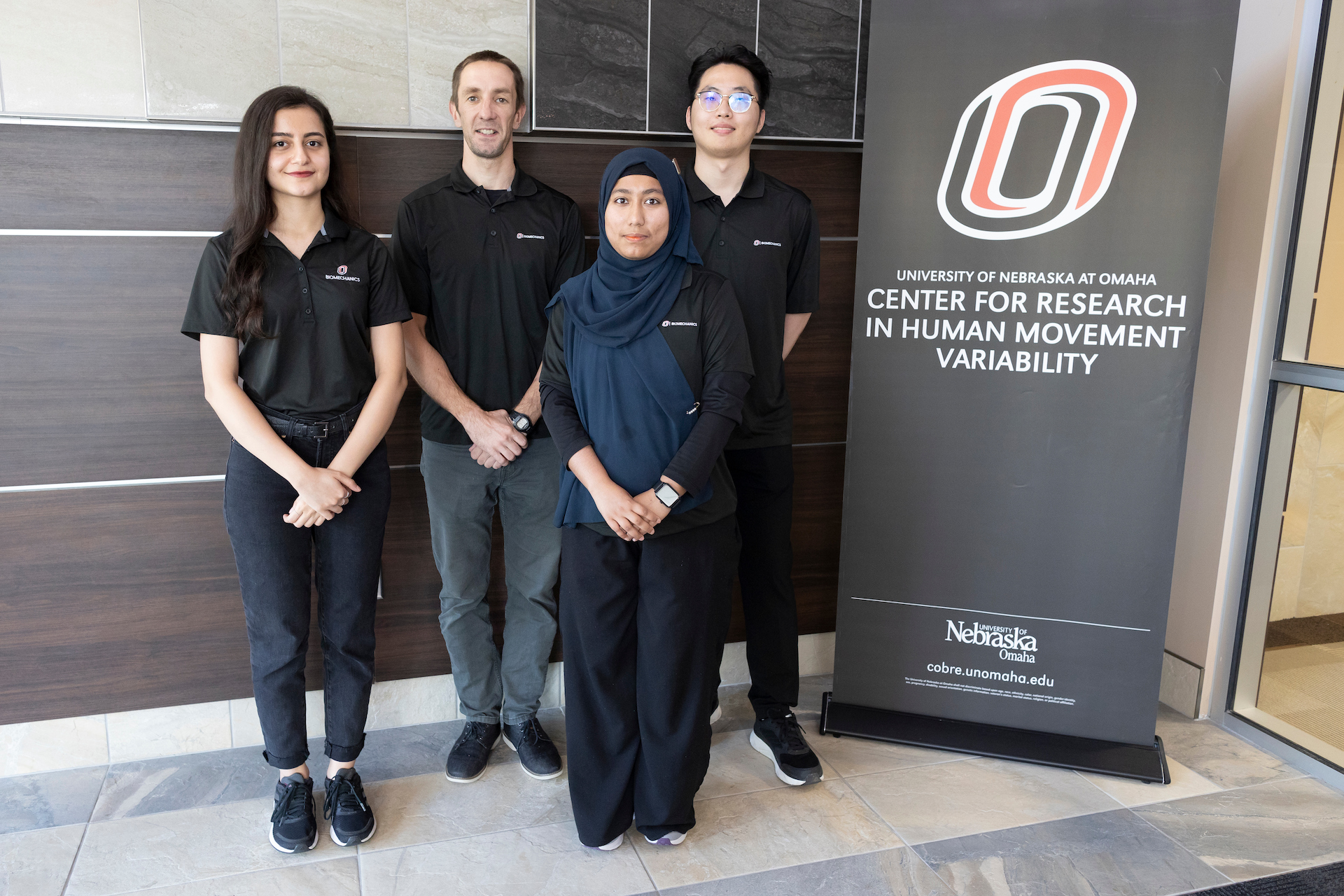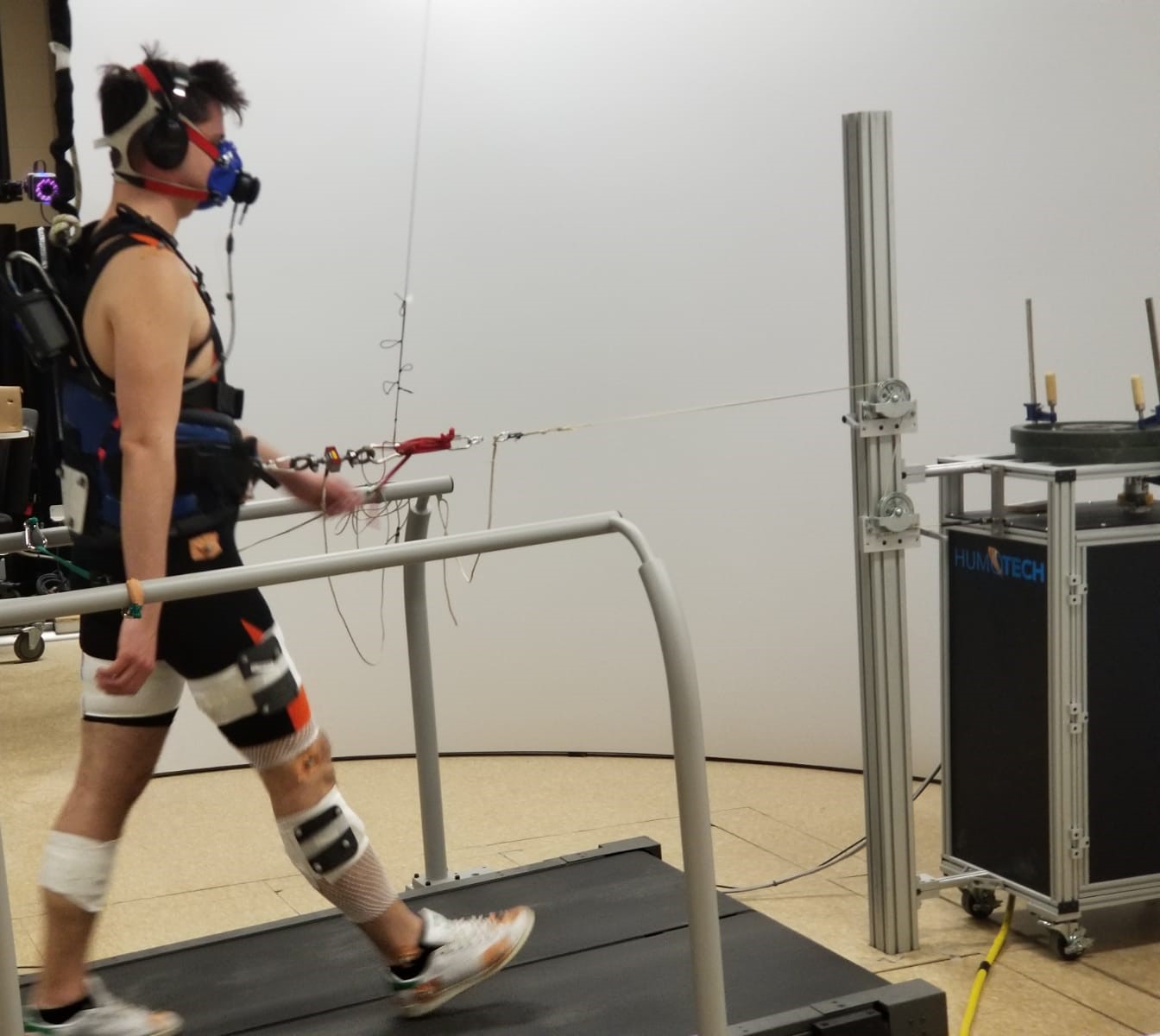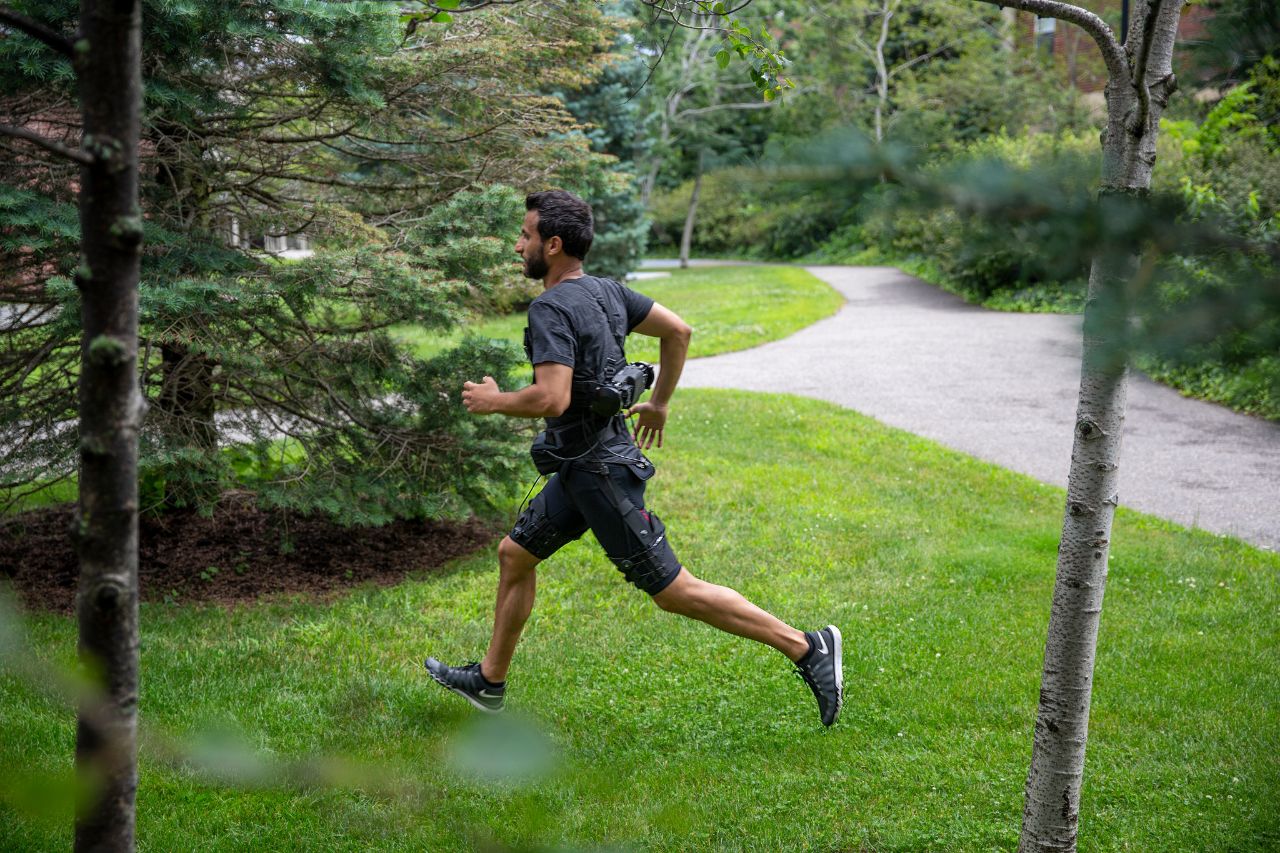Exoskeleton optimization for reducing gait variability in patients with Peripheral Artery Disease
The objective of this project is to develop more clinically feasible methods for optimizing assistive devices for patients populations, such as patients with Peripheral Artery Disease (PAD).
Wearable robots such as exoskeletons in development at UNO and other universities can reduce the metabolic cost of walking. Fine-tuning the controls of an exoskeleton for an individual typically requires up to one hour of walking experiments. However, patient populations such as patients with peripheral artery disease typically cannot walk longer than a few minutes because of muscle pain; therefore, it is challenging to optimize exoskeletons for the patient populations that could most benefit the most from these devices.

From left to right: Hiva Razavi, Dr. Philippe Malcolm, Nohshin Nafisa, Eric Sangwon Shin.
As part of this project, Malcolm his team aim to develop faster and thereby more clinically feasible methods for optimizing a hip exoskeleton. These algorithms will rely on movement variability measurements supported by our center of human movement variability.
| Examples of Exoskeletons | |
|---|---|
 |
 |
| A system for robotic walking assistance based on a commercially available actuation and control platform. | Hip exosuit research co-authored by Malcolm. (Image from Wyss Institute at Harvard University) |
We expect that more clinically feasible methods for optimizing exoskeletons will be useful for optimizing exoskeletons in other patient populations or even optimizing other devices such as individualized footwear. In parallel with this research, our team develops educational tutorials on exoskeletons and biomechanics.
- Antonellis, P., Galle, S., De Clercq, D., Malcolm, P., Altering gait variability with an ankle exoskeleton PloS one 13 (10), e0205088
- Malcolm, P., Derave, W., Galle, S., and De Clercq, D. A Simple Exoskeleton That Assists Plantarflexion Can Reduce the Metabolic Cost of Human Walking. PLoS One 8, no. 2 (2013): e56137.
- Malcolm, P., Galle, S., and De Clercq, D., Fast Exoskeleton Optimization. Science 356, no. 6344 (2017): 1230–1231.
- Gonabadi, A. M., Antonellis, P.A., Malcolm P. A system for simple robotic walking assistance with linear impulses at the center of mass. TNSRE 28, no. 6 (2020): 1353-1362.
- Kim, J., Lee, G., Heimgartner, R., Revi, D. A., Karavas, N., Nathanson, D., Galiana, G., Eckert-Erdheim, A., Murphy, P., Perry, D., Menard, N., Malcolm, P., Walsh, C. J., Reducing the metabolic rate of walking and running with a versatile, portable soft exosuit. Science 365.6454 (2019): 668-672.
- Antonellis, P., Frederick, C. M., Gonabadi, A. M., & Malcolm, P. Modular footwear that partially offsets downhill or uphill grades minimizes the metabolic cost of human walking. Royal Society open science 7.2 (2020): 191527.
- Gonabadi A. M., Malcolm P., Tutorial: Using EduExo to visualize electromechanical delay in m. biceps brachii. American Society of Biomechanics teaching repository (2018)